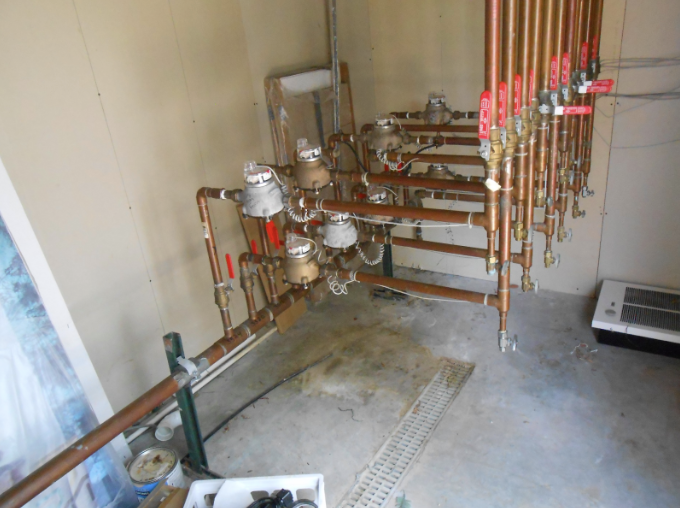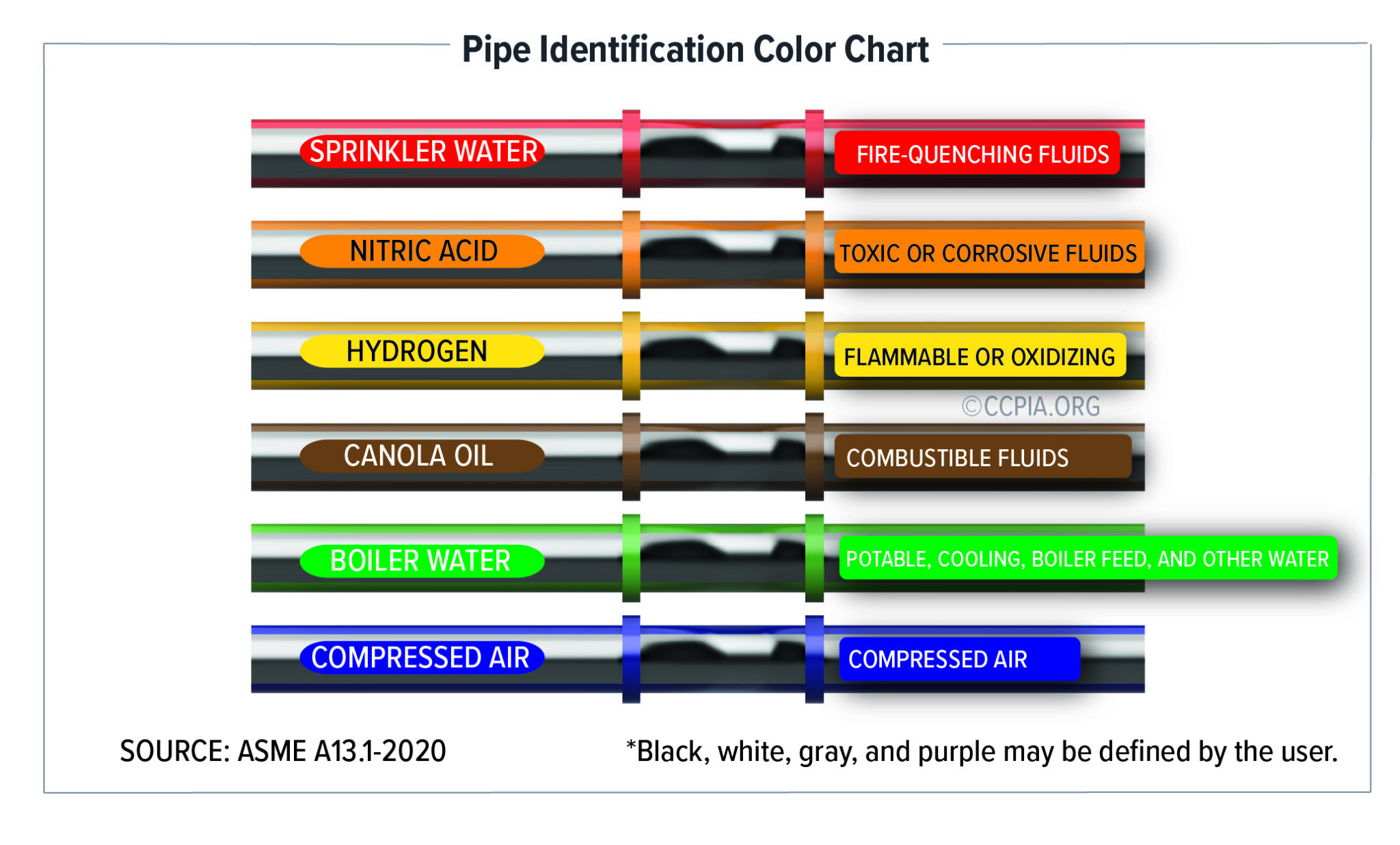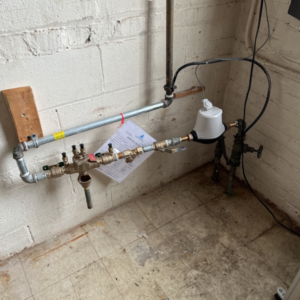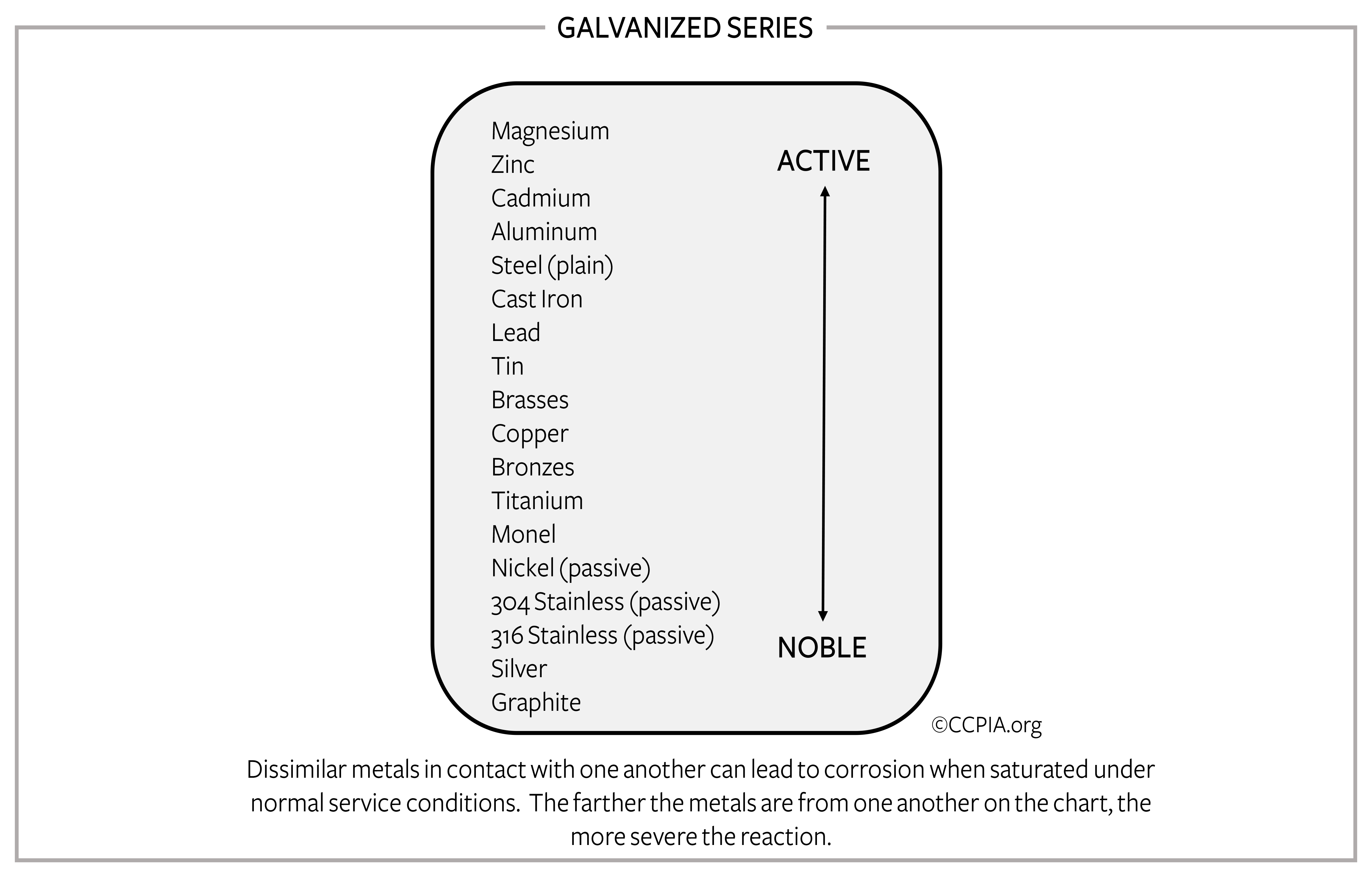Commercial property inspections entail an assessment of the water service. This portion of the inspection should begin with locating the main water service/supply leading into the building. The main water service/supply could be located anywhere at the property, and some buildings may have several locations, such as at multiple tenant properties. The main water shut-off valve is also typically located in the same location as the main water service/supply. At this point, the inspector can also determine whether the water supply is public or private. There will be a meter present if the water supply is public, and the water supply will be a well if it is private.
The water service, service valve, or water meter may be located in an area subject to freezing conditions. For instance, some buildings may have the main water service and related plumbing components in a room that lacks sufficient heating, and inspectors may notice portable space heaters instead. This is often considered a “public space” that is not specified as a tenant space. If this is the case, there should be permanently installed preventive measures. These could include pipe wrap, space heaters, or openings into heated spaces.

Water supply room with portable heater
NOTE: Operating any main, branch, or fixture valve is beyond the scope of the walk-through inspection.
Water Supply Materials
Copper: This is the most common material used at commercial properties to carry both hot and cold water. Copper pipes have soldered joints and fittings.
Plastic: This material is becoming more common. Plastic pipes have glued joints and fittings. There are several types of plastic pipe, including:
- PVC (polyvinyl chloride), which can effectively carry cold water.
- CPVC (post-chlorinated polyvinyl chloride) pipe is designed to handle hot water. CPVC can last longer than copper because it is more resistant to corrosion.
- PEX (cross-linked polyethylene) is becoming increasingly popular because it is very flexible and able to have continuous distribution without transitions or fittings.
- PB (polybutylene) has been mostly discontinued due to the failures in its mechanical connections.
Galvanized: This type of pipe is iron pipe that has gone through a zinc galvanization. This process helps prevent rusting and other corrosive damage. These pipes are joined together with threading. Galvanized pipes have a typical design life of about 45 years. Rusting can sometimes be seen at the tops of pipes.
When two dissimilar metals are joined together, there is a high potential for corrosion to form, and this is called galvanic reaction. An example of this would be a galvanized pipe joined to a copper pipe. Because copper is a noble metal, and iron is classified as a transition metal, the iron will eventually fail. This is the reason that a di-electric union is typically used.
Residential vs. Commercial Cross-Connections
Residential inspections include identifying the presence of cross-connections. This is where the potable water and contaminated water can come into contact. Both residential and commercial properties have a permanently installed safety device called a backflow preventer, which protects the building’s water supply from any cross-connections. Backflow preventers are typically located at the main water service. They should have an inspection tag present. Many jurisdictions require them to be tested and inspected on a periodic basis.
Labeling
Larger or modern buildings may have permanent labeling on the various pipes, conduits, and raceways. These may include color-coding of the pipes themselves. Per ASME A13.1-2020, Scheme for Identification of Piping Systems, potable water piping typically has a green label. However, some city and state plumbing codes may require a blue label on potable water piping. These pipes may be copper, PVC, CPVC, or galvanized. All insulated pipes should be clearly labeled, too.


All readily accessible and visible water supply piping should be traced from the source, the meter, or from the fixtures. Any visible signs of corrosion, damage, leakage, poor connections, poor support, or any other general issues should be noted in the inspection report for your client.
In most cases, all of the applied knowledge gained from performing residential inspections translate to the commercial scope and expectations. Refer to InterNACHI’s Residential Plumbing Overview for Inspectors Course for information about inspecting residential plumbing systems.

Size of Plumbing Pipe
Water service and drain plumbing must be properly sized to allow fixtures to operate properly, and for proper draining and venting.
The size of the water supply piping is based on these conditions:
- amount of water needed;
- supply pressure;
- pipe length;
- number of stories to be supplied; and
- flow pressure needed at the farthest point from the source.
NOTE: Calculating or determining the proper size of the service or flow rates is beyond the scope of the walk-through inspection.
Other factors to consider is whether or not a fire sprinkler system is present. These systems require a considerable amount of water volume, and the potable service might be a general tap off that system.
Takeaway for Commercial Property Inspectors
Commercial property inspectors should assess the main water service. The location of the main water service, water shut-off valve, and backflow preventers are typically located in the same area. Inspectors should inspect and report on this system. Jobs that entail inspecting more than one unit or building may include separate water services and related plumbing components for each individual unit or building. Plumbing systems should be labeled based on the fluid in the piping services. This is an important safety feature, especially for protecting occupants from cross-contamination, which can occur anywhere in a building. It is the inspector’s duty to report any potential contamination issues between the water-distribution system and non-potable water or a private source. Plumbing inspections are not technically exhaustive, as it’s primarily a visual assessment.
Article Written By: Rob Claus, CMI®
Additional Resources for Commercial Property Inspectors:



